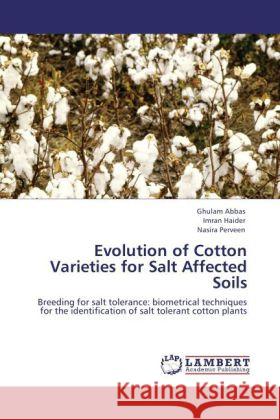Evolution of Cotton Varieties for Salt Affected Soils » książka
Evolution of Cotton Varieties for Salt Affected Soils
ISBN-13: 9783848408535 / Angielski / Miękka / 240 str.
Geometric population growth and declining agricultural land are becoming major concerns for agricultural scientists and policy makers. After more than two decades of experiences and research work, Pakistan is now learning to live with salinity. Development of cotton varieties having good performance for salt-affected soils is one of the prime objectives of the cotton breeding institutions across the globe. Thus, a regular screening of available germplasm is need of the time because of fast spreading saline areas with increasing level of salinity toxicity and deterioration in genetic makeup of already salt tolerant genotypes. The present study was planned with the objectives to screen-out available of cotton germplasm for determining their salt tolerance potential, to check-out the genetical behaviour of F1 cotton genotypes under salt stress and to find out F1 cotton genotypes having high yield potential than existing cultivars.Various biometrical techniques e.g, genetic components of variation, heritability, genetic advance, correlation, path coefficient, heterosis, combining ability, selection index, have been used in present research for selection of salt tolerant genotypes.











